These Yoga Poses for Runners Will Result In Your Best Run—And Recovery
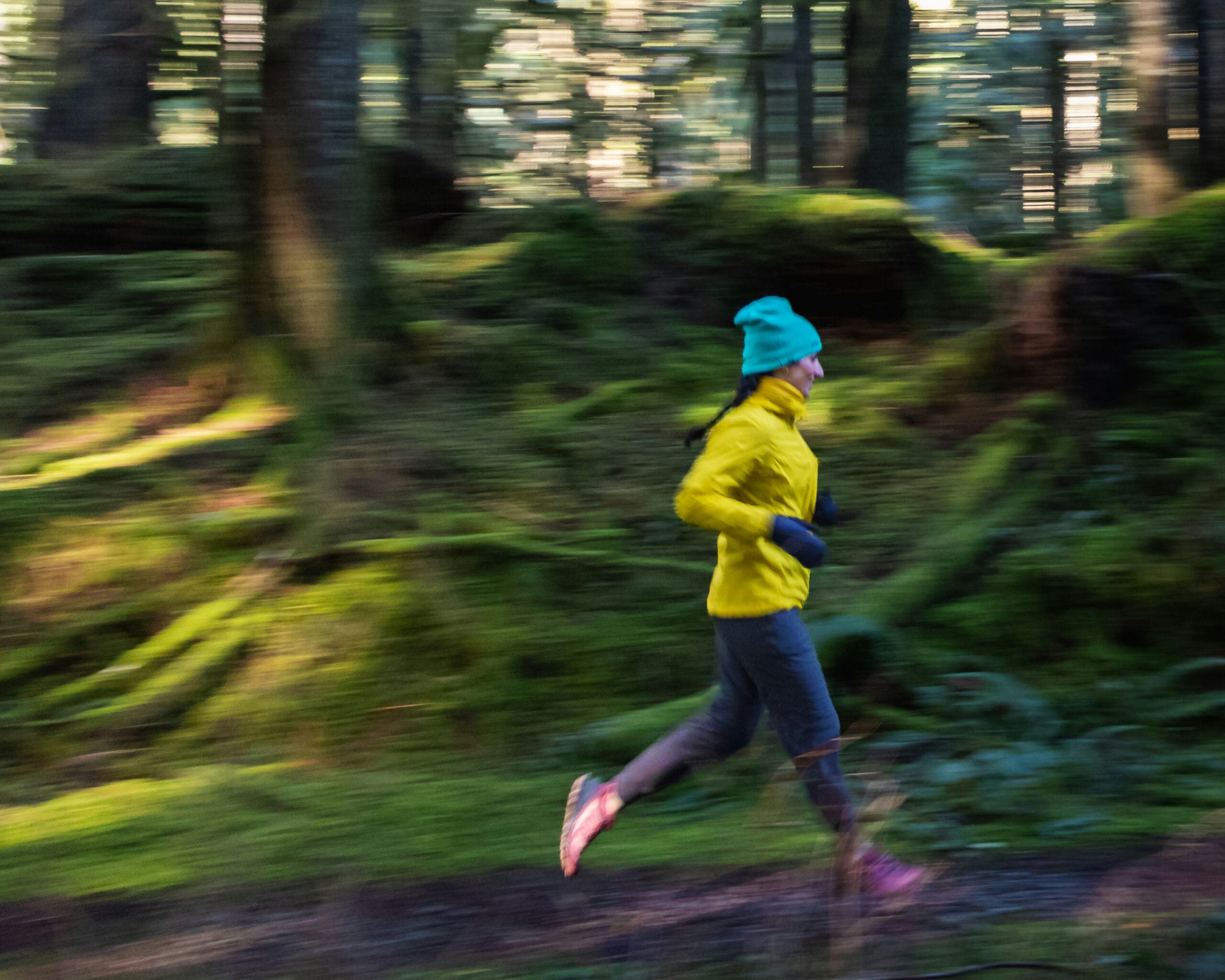
(Photo: Greg Rosenke | Getty)
As a runner, you know that overtaxing already tight muscles can lead to soreness or injury, such as muscle strains or tears, which can potentially sideline you from running for (shudder) weeks.
But sometimes you don’t know you’ve pushed yourself too hard until it’s too late. So how do you reduce your chance of injury and stave off delayed-onset muscle soreness (DOMS) after your workout? Practicing a couple minutes of yoga for runners before and after your training runs can help with that.
What Are The Best Stretches for Runners?
Runners require both dynamic and static stretches. Dynamic stretches, as the name implies, move your joints through their range of motion. They contract and lengthen your muscles and connective tissues and act as a warm-up for your entire body. Dynamic stretching before a run warms up your legs and helps prevent injury.
Static stretches, on the other hand, take your muscles to their maximum range of motion and keep them there. Static stretching after a run reduces the accumulation of lactic acid in your muscles to minimize soreness.
Yoga is a mixture of both dynamic and static stretches—flowing through poses provides the dynamic aspect, and remaining steady in a posture offers the static element—which is what makes yoga for runners so effective.
Yoga Poses for Runners
The below sequence includes dynamic and static poses that stretch and strengthen the muscles runners use most including the hamstrings, calves, quads, and hip flexors. Practice one or a few of the dynamic poses before your run and the static poses after.
Experts recommend holding static stretches for 10 to 30 seconds each, although it’s not necessary to hit that target in one go. Three rounds of 10 seconds in a pose is just as effective for improving flexibility and range of motion. Patience is required, as static stretching won’t immediately release a stiff muscle. But, in time, consistently stretching in this manner will increase your range of motion.
Dynamic Poses for Runners
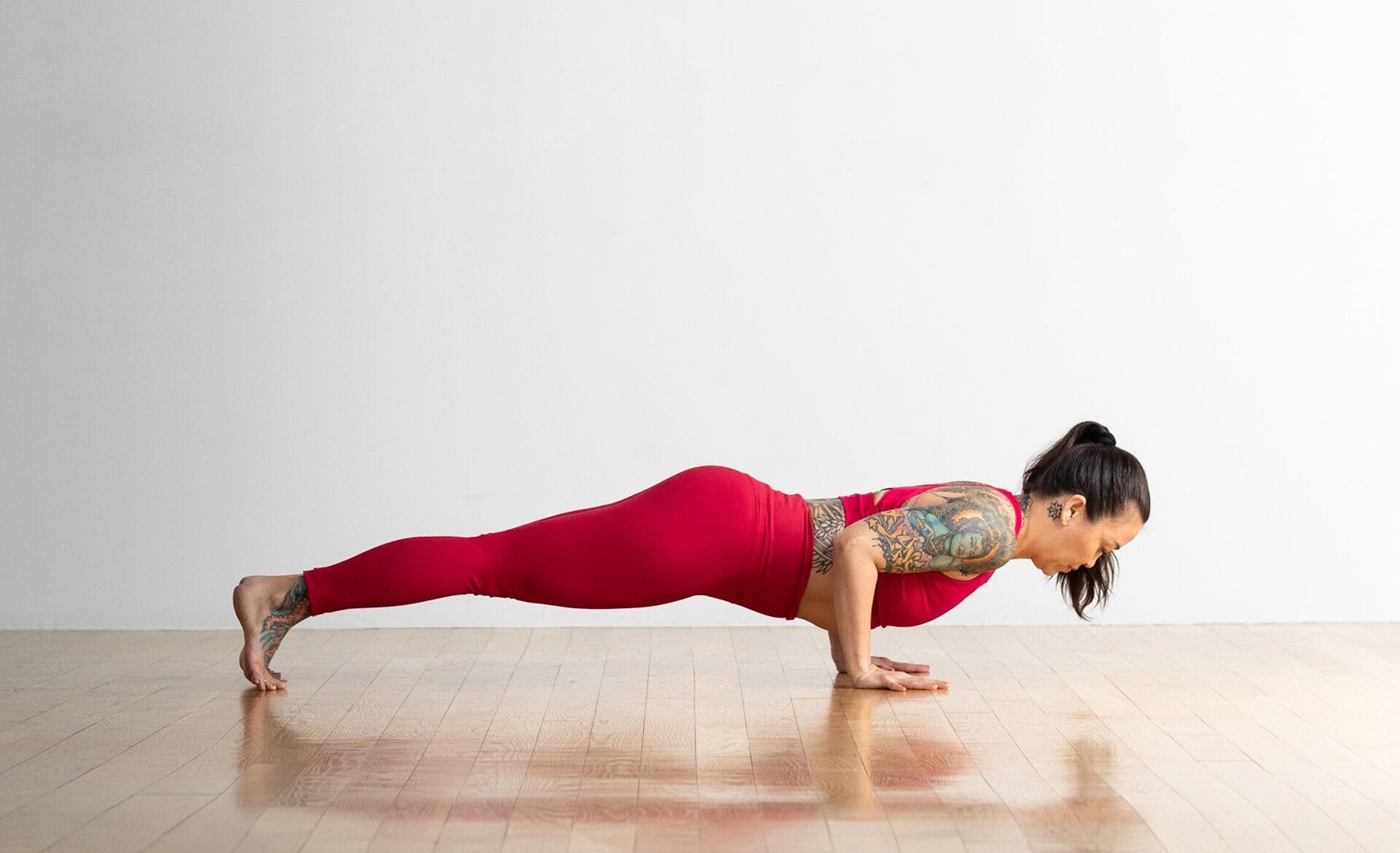
1. Sun Salutation A (Surya Namaskar A) Variation
This sequence of poses is a dynamic stretching session that engages muscles throughout your entire body. Standing Forward Bend targets your hamstrings. Lunges stretch your quadriceps and hip flexors. Plank and Cobra Pose (Bhujangasana) work your shoulders. And Downward-Facing Dog Pose (Adho Mukha Svanasana) offers a full-body stretch that includes your oh-so-tight calves.
Throughout this practice, your spine flows through flexion (forward fold) and extension (backbend) to relieve tension in your back. Sun Salutation A will also get your blood pumping and increase your core temperature, readying your body for the distance ahead.
2. Chair Pose (Utkatasana)
Repeatedly moving from bent knees to standing transforms this typically static posture into a dynamic warm-up. Your upper back, shoulders, and core remain engaged as you swing your arms alongside your head and keep them there. Your glutes, quadriceps, hamstrings, and calves fire to propel you back to standing.
How to:
- From standing, inhale and reach your arms alongside your ears. Keep your arms parallel to each other with your palms facing inward.
- Exhale and bend your knees in Chair Pose. Stay for one breath. Then as you inhale, straighten your knees and return your arms to your sides. Repeat 10 times.
Static Poses for Runners
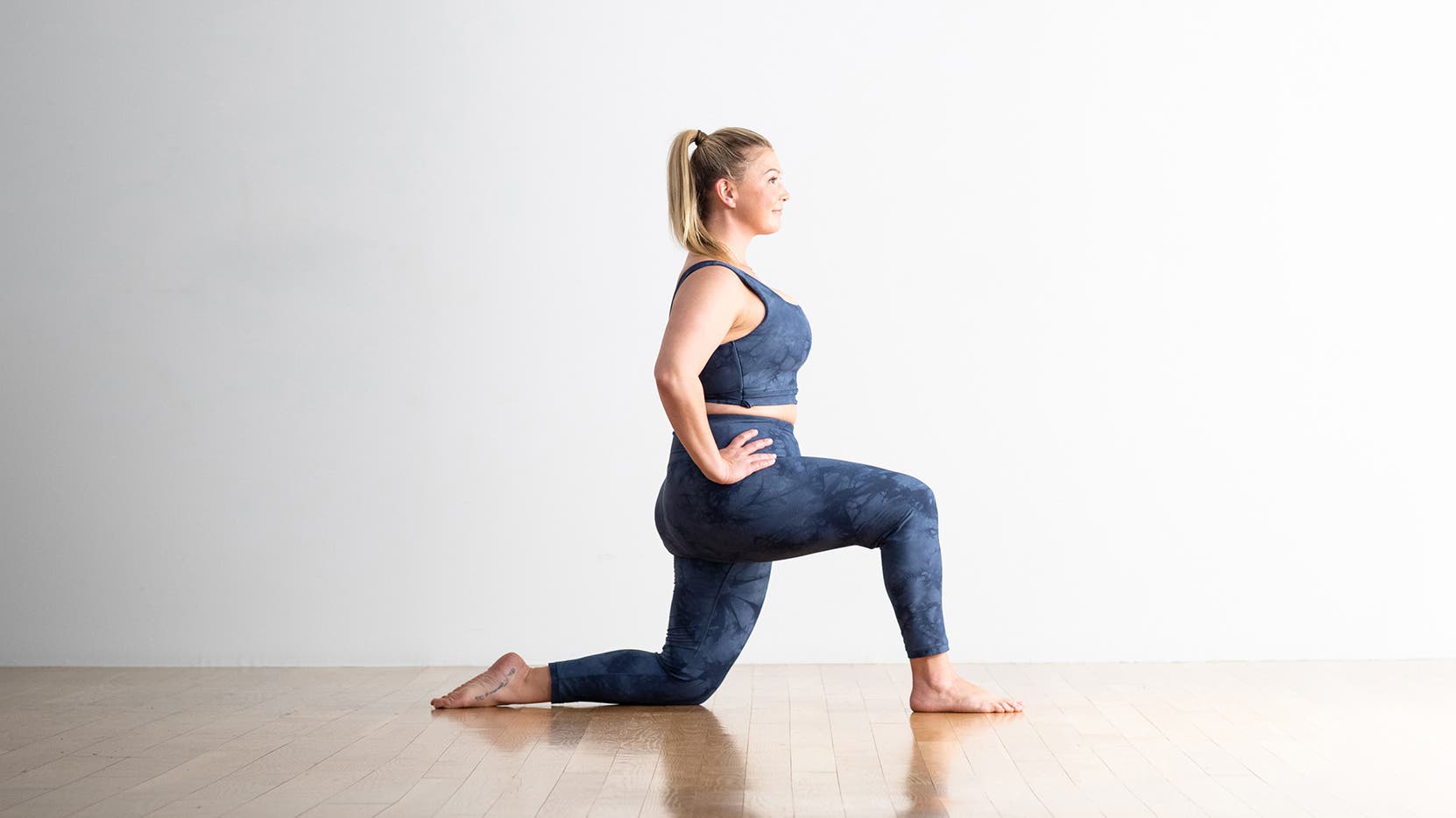
3. Low Lunge (Anjaneyasana)
This posture provides a stretch for the hip flexors, adductors, glutes, and quadriceps. You’ll experience this stretch mostly in your extended leg as your front leg acts as the lever to control the intensity.
How to:
- From Downward Dog, exhale and step your right foot forward between your hands. Lower your left knee to the mat and slide your left knee back until you feel a comfortable stretch along the front of your left hip. Place a folded blanket or towel underneath your back knee if it’s more comfortable. Rest the top of your left foot against the mat.
- Inhale and lift your chest. Sweep your arms out to the sides and alongside your head, palms facing each other or touching. Look straight ahead or tilt your head slightly back. Stay in Low Lunge for 1 minute.
- To come out of it, lower your hands to the mat on either side of your front foot. As you exhale, tuck your back toes, lift your back knee off the mat, and step back to Downward-Facing Dog. Repeat on the left side.
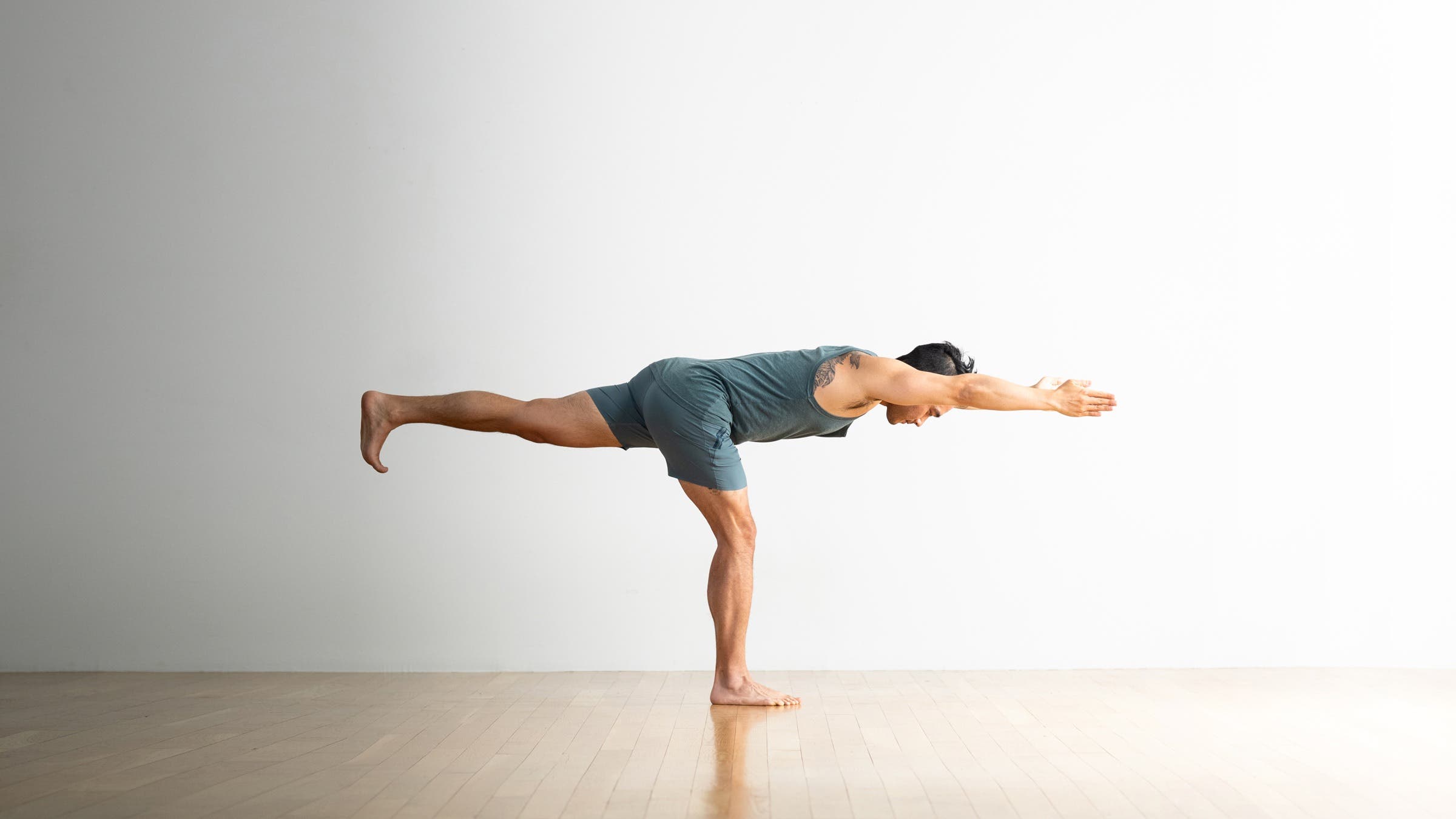
4. Warrior Pose 3 (Virabhadrasana III)
Runners need ankle mobility for proper foot placement mid-stride and to assist with injury prevention. Tight ankles can maladaptively disperse pressure into the knees, hips, and lower back. Balancing on one leg in Warrior 3 requires support from the ankle which helps increase your range of motion and strengthens the ligaments and tendons in the foot and ankle to better prepare you for running on uneven surfaces.
How to:
- From standing, exhale and step your left foot back into High Lunge. Bring your hands to your chest in prayer position.
- Shift your weight forward into your front foot and lift your left foot off of the mat. Start to straighten your front leg as you lift your back leg. Keep your gaze down and slightly forward. For a shoulder stretch, slowly reach your arms forward, parallel to each other, with your palms facing each other. Push through your back heel toward the wall behind you and, if your arms are extended, reach just as actively toward the wall in front of you. Stay in Warrior 3 several breaths. To come out of it, step your left foot forward to meet your right. Come into Standing Forward Bend for a few breaths, then repeat on your other side.
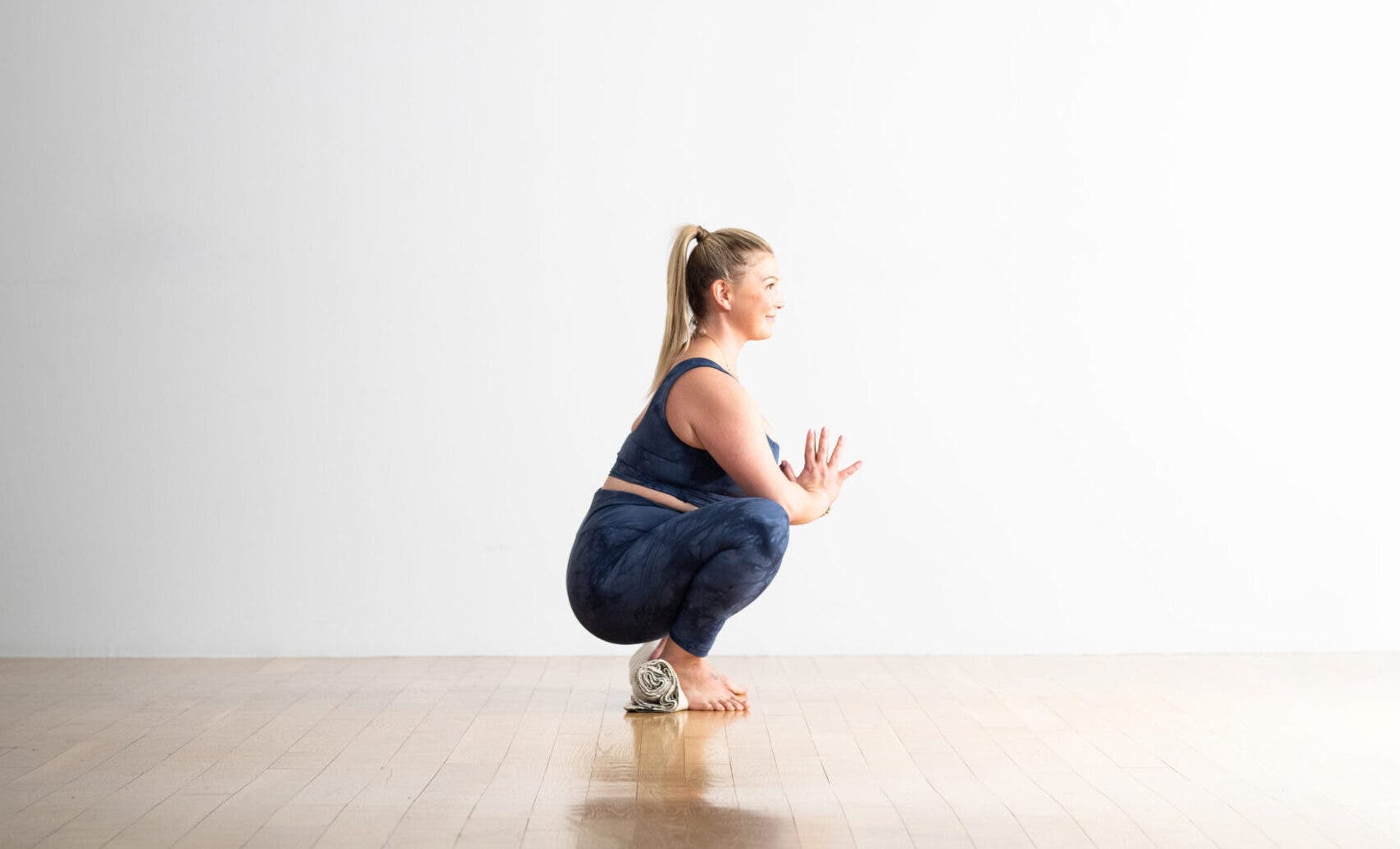
5. Squat (Malasana)
We all know squatting is effective strength training, but it’s also a useful position for muscle recovery. Lingering in Squat can help release tension in your hips and low back and improve ankle mobility. Rocking from side to side in this position can also improve ankle dorsiflexion and increase the stretch in your inner thighs. (If you have low back or knee injuries, though, rocking may aggravate it and should be avoided.)
How to:
- Stand with your feet at least hip-distance apart and slightly turned out.
- Slowly lower your sitting bones toward the mat. If your heels are lifted, roll or fold the back of your mat or a blanket and slide that underneath them. Exhale and reach your chest slightly forward. Bring your palms together at your chest in prayer position and gently press your elbows and inner thighs against each other in Squat. Lift your chest slightly. Stay here for 30 seconds to 1 minute. To come out, inhale as you straighten your knees and return to standing.
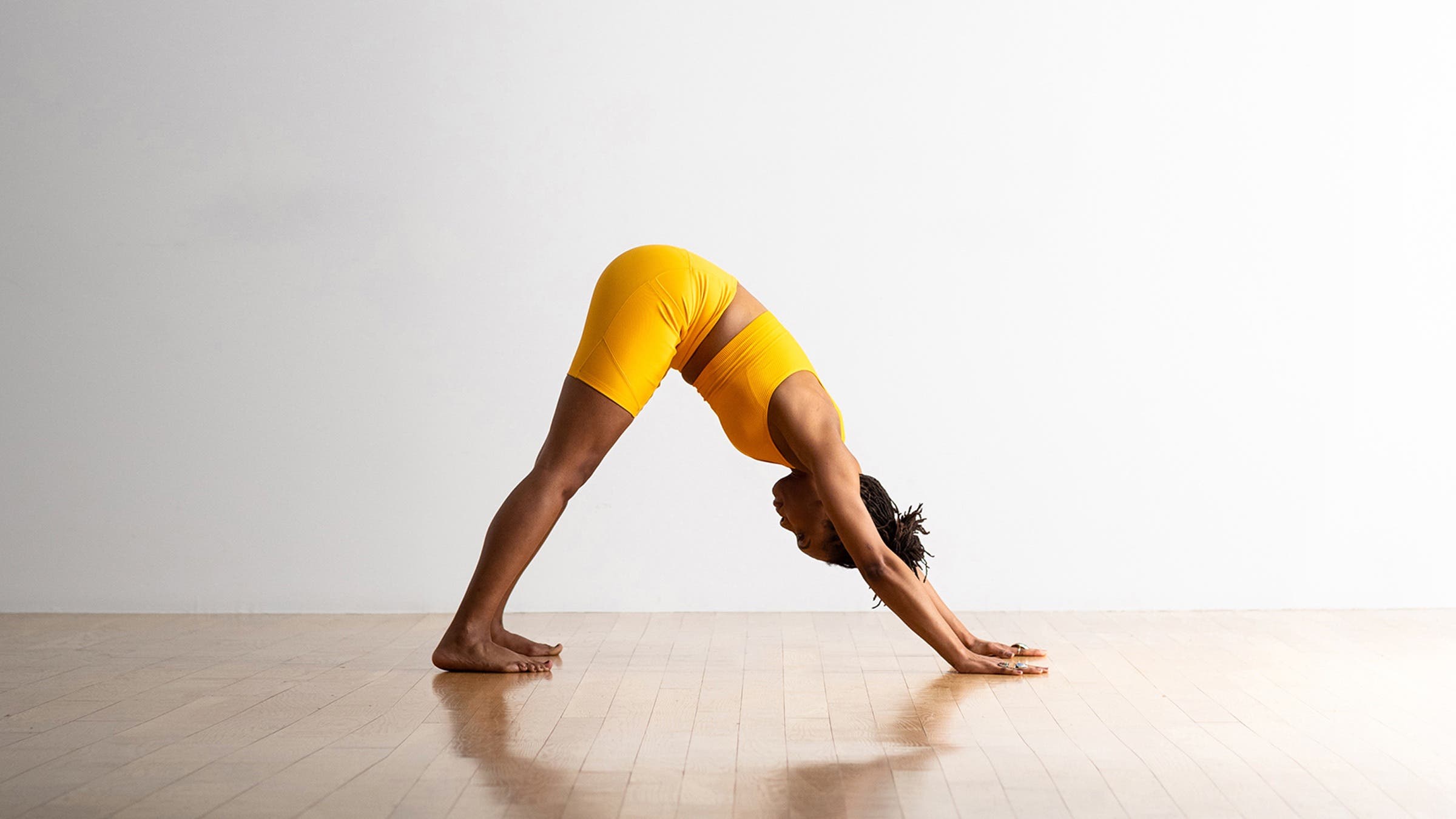
6. Downward-Facing Dog Pose (Adho Mukha Svanasana)
Although most runners focus on stretching their legs, they often overlook tension in their back and shoulders, which can become stiff due to pumping your arms during a run and repeatedly absorbing the shock from every foot strike. Down Dog stretches all of these muscles.
How to:
- Come to your hands and knees with your hands a few inches in front of your shoulders and shoulder-width distance apart. Press your knuckles into the mat.
- Inhale and tuck your toes. Exhale and press your hips back and up, bringing your legs toward straight although you can keep them slightly bent. Let your head hang in Downward Dog and keep your gaze toward your thighs. Draw your shoulders down away from your ears. Breathe here for up to 1 minute.
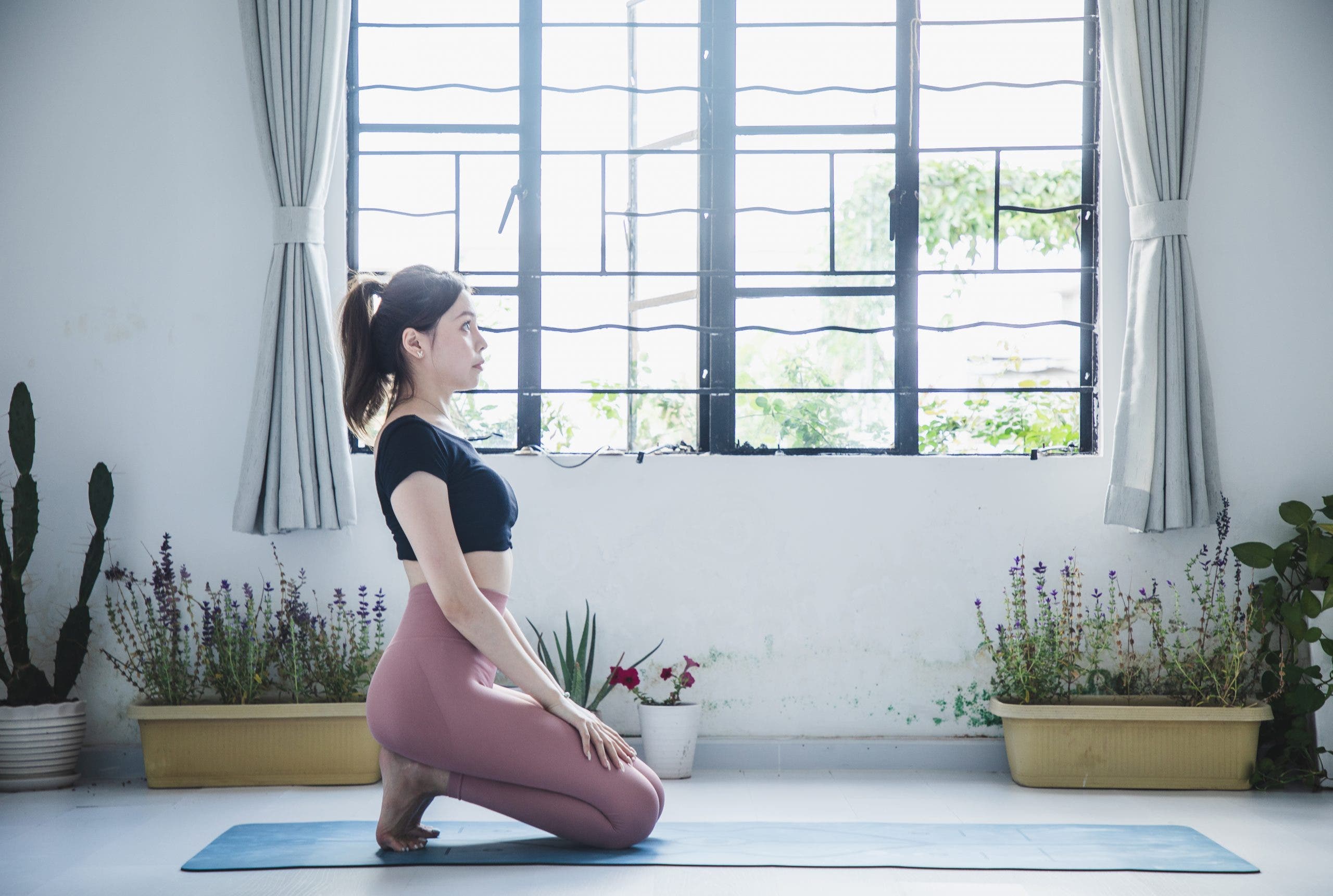
7. Toes Pose
Your feet and shins can experience tremendous stress from the pounding of your feet on the ground. Stretching your toes and the soles of your feet can reduce the occurrence of plantar fasciitis, which in turn ensures your runs remain bearable. This pose also stretches the muscles and connective tissues along the tibia to help prevent and reduce the pain of shin splints.
How to:
- Kneel with your toes tucked. If needed, use your hands to tuck all of your toes.
- Slowly shift your hips back so your sitting bones move toward your heels. If it’s manageable, you can rest your sitting bones on your heels. Remain here for 30 seconds to 2 minutes.
This article has been updated. Originally published August 13, 2021.